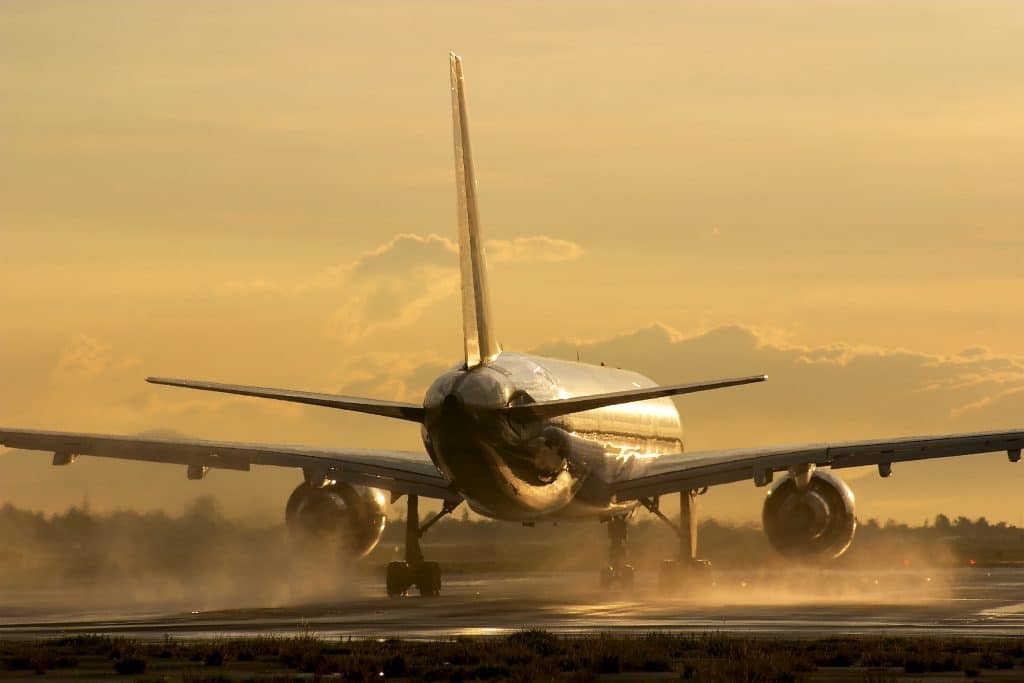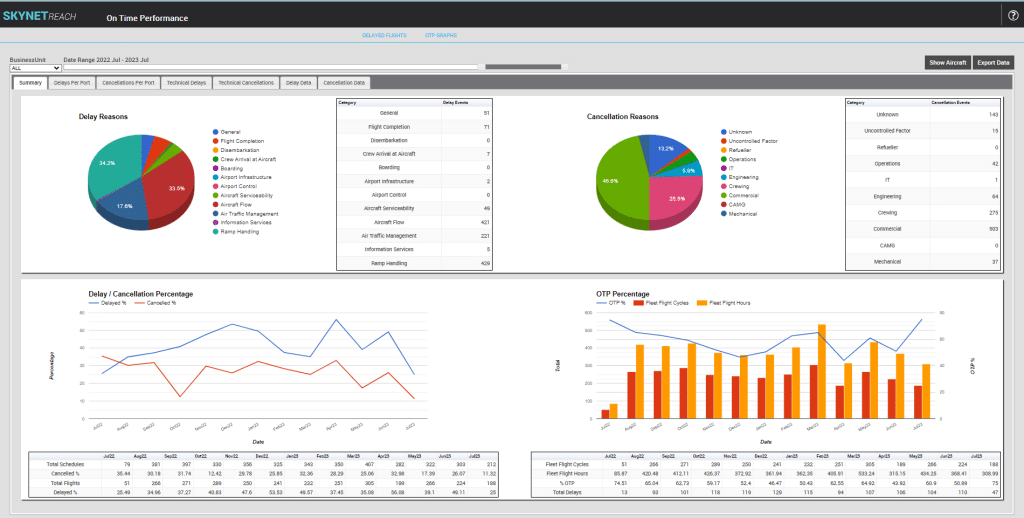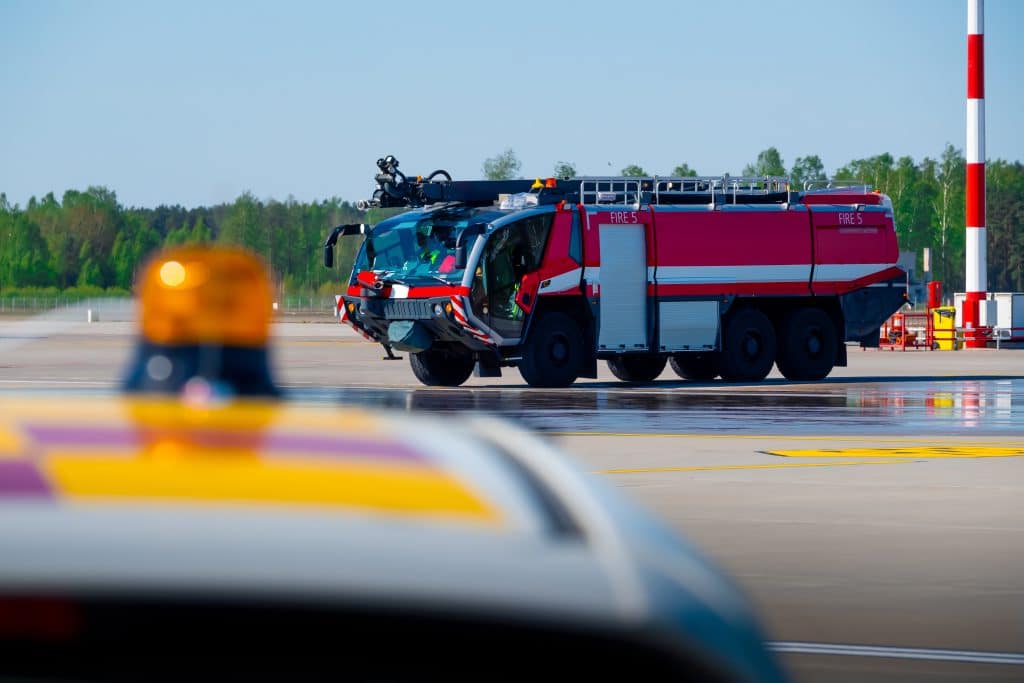ADS-B is the solution of choice for low-cost, real-time, extreme-location flight tracking. Australia, SkyNet Aviation®’s home country, isn’t alone in its rollout of ADS-B mandates and – like many parts of Canada, Africa, Russia and beyond – much of the landmass is remote, hostile and lacking infrastructure.
Gap-free conventional ADS-B coverage will never materialise in these places through simple general public need as it has in Europe, the US and the developed regions of Asia. This is where SkyNet comes in.
Though developing commercial ADS-B networks, harnessing the data generated and then presenting it back via the REACH® Day Of Operations dashboard, SkyNet is able to offer clients a 100-percent reliable ADS-B solution.
What is commercial ADS-B?
Commercial ADS-B goes beyond the public ADS-B network. By placing ADS-B receivers in strategically chosen locations where clients require them, a commercial ADS-B network broadens the current network to ensure that specific flightpaths are covered.
When once you would fly into airspace where, say, only expensive satellite tracking could give positioning, now those aircraft can stay covered under the cost-effective precision of ADS-B.
Further, the data generated through our commercial ADS-B networks isn’t publically available. Instead, it is only fed into the broader SkyNet ADS-B network and viewable by our users through the world-leading REACH® Day Of Operations suite.
SkyNet Aviation®’s commercial ADS-B solution
Over the past few years, SkyNet Aviation® has been extending tailored ADS-B networks for its clients. With many gaps in the public ADS-B networks closed, SkyNet Aviation®’s clients are now tracking their fleets through remote airspace accurately and effectively. Desert, snow, mountain, jungle and out to sea – our ADS-B receivers are already out there.
Jon Davis, CEO of SkyNet Aviation®, says it’s all part of giving clients access to a complete network with enterprise-quality service. While most operate on flightpaths already covered under a combined public ADS-B and SkyNet network, there are often exceptions.
“When the existing network does not extend to where a client needs it, we’re prepared to partner with them to build out the coverage. The result is a full-coverage ADS-B solution specifically tailored to your needs.”
SkyNet Aviation®’s commercial network for Australia already tracks aircraft across much of the continent’s interior, coastline and northern waters. Each time a client needs more coverage in a specific place, another receiver is added. This also serves to improve the overall network.
A case in point
As more and more customers join the network, SkyNet continues to partner with them to deploy more extensive remote commercial ADS-B infrastructure. The world-famous Royal Flying Doctor Service is a case in point.
“We have partnered with the Royal Flying Doctor Service to expand our commercial ADS-B network to provide remote-area coverage across 1.8 million square-kilometers of inland Queensland. Only a few hundred thousand people live in this landscape of cattle stations, mines, dry plains and scorching deserts.
“This work has involved installing 40-plus ADS-B receivers throughout an area the size of Western Europe. The reach we are now providing with this has resulted in to-the-second reporting for remote areas that have never even had radar coverage before. This is a major leap.”
The network, currently in service, is helping the Royal Flying Doctor Service deliver world-class aeromedical services via its fleet of approximately 20 aircraft. And still, Davis explains, many people in the aviation industry don’t yet understand that something like this can be done cost-effectively.
Meanwhile, in other global regions where SkyNet’s aggregated ADS-B network coverage is currently available, we can enable ADS-B integrated solutions for clients to better capitalise on already-available satellite tracking data. One of these augmented ADS-B solutions is already being used by Scandinavian Air Ambulance (SAA) in Norway. There it serves to bolster SAA’s tracking capabilities across a fleet of emergency medical transport turboprop and jet aircraft.
“They don’t grasp how such wide areas can be covered with this technology. They look at the ADS-B equipment and think they need radar installations, not an antenna here and there,” he says.
“The fact of the matter is, the ADS-B receiver – a processing box and an antenna about 60cm long – is just the tip of the iceberg. The most important facet of the network is harnessing the data.
“At the end of the day, it’s SkyNet’s ability to collate and present the flight data that sees our clients better able to manage their fleets.”
How it works
When a client approaches SkyNet Aviation® about a commercial ADS-B solution, our first port of call is to conduct a flightpath audit.
Through careful analysis, we’re able to generate a heatmap of any gaps in the public ADS-B coverage currently faced by the clients’ operations.
From there, we’re able to propose a 100-percent coverage solution to close those gaps and ensure flightpaths are fully covered.
The final step is training: either onsite or via live video. In this stage, SkyNet upskills your flight monitoring personnel (and any other nominated staff) to capitalise on the ADS-B data through our REACH Aero® Day of Operations suite.
Further, Davis explains that rolling out the receivers is often easier than it would seem.
“Many companies have existing relationships they can leverage when placing new ADS-B receivers. We also capitalise on any of your suitable existing infrastructure. This allows us to provide the longest possible range with the most minimal utility service required,” he says.
“FPSOs, oil platforms, lighthouses, radio towers, electricity pylons, equipment depots, service sheds, comms rooms on uninhabited islands – all are perfect locations for a remote ADS-B receiver.
“For example, we partnered with a client to install an ADS-B receiver on a wind turbine on Thursday Island, midway between Australia and Papua New Guinea. The client doesn’t own the turbine, but they got permission for the installation through their connections.”
As in this case, Davis is a big proponent of leveraging existing partnerships and contacts to expand network capability.
“It’s through relationships like this that the SkyNet commercial ADS-B network is flourishing.”
Remote and hazardous
As for the infrastructure itself, SkyNet Aviation® prides itself on enabling remote or hazardous operations. This means our equipment is durable and reliable in some of the world’s most inhospitable areas.
From the rugged mountains of Papua New Guinea to the floating gas rigs in the Timor Sea, our receivers operate in a range of harsh conditions to ensure matchless aircraft tracking.
Also, given the low financial barriers to entry, no network gap is too small to plug up in a cost-effective way. In many cases, a client only requires one additional receiver to fulfil their aircraft-tracking needs. The cost of installing one receiver can often be immediately absorbed under a monthly operating budget.
Furthermore, the SkyNet Aviation® ADS-B solution offers a wide range of back-haul communications options, including:
- WiFi
- Mobile network
- Ethernet
- Satellite.
It’s all in the data
Flight positioning is worth naught without viable data. This is why SkyNet Aviation® has not only invested in ADS-B network infrastructure, but also the means by which the harvested data can be reliably translated for an end user.
Tools like SkyNet Aviation®’s REACH Aero Day Of Operations suite ensure flight tracking, scheduling and maintenance for multiple aircraft can all be handled through one screen on one workstation. Furthermore, by using SkyNet Aviation®’s commercial ADS-B solution you’re ensuring your flight data isn’t publically available.
No, unlike conventional “public” ADS-B solutions, the data contained within SkyNet Aviation®’s commercial ADS-B network is centrally controlled. Only SkyNet Aviation® clients have access to all the flight information gathered by our ADS-B network.
“The tracking is tailored to your specific and existing operational needs,” Davis explains.
“With public ADS-B, which everyone is already using, everyone can see what your aircraft are doing. We are, however, careful to explain that having a commercial ADS-B network tailored for your needs does not mean you’re the only ones who can see the tracking data it generates. It’s an important point to clarify.”
How will commercial ADS-B work for you?
Commercial ADS-B goes where the public network cannot. By rolling out private receivers where our clients need them most, SkyNet Aviation® is able to offer a 100 percent coverage solution to ensure your fleet is able to be tracked, no matter how remote or hostile your flightpath.
“No one else is able to custom-design a quality-of-service-guaranteed commercial ADS-B network like we can,” Davis says.
“It’s our ability to tailor our ADS-B network to your specific needs that sets us apart from the competition.”
Partner with a flight-management solutions world leader. Get in touch today and see how SkyNet Aviation®’s commercial ADS-B solution can help you better track your fleet – by the second and down to the ground.



